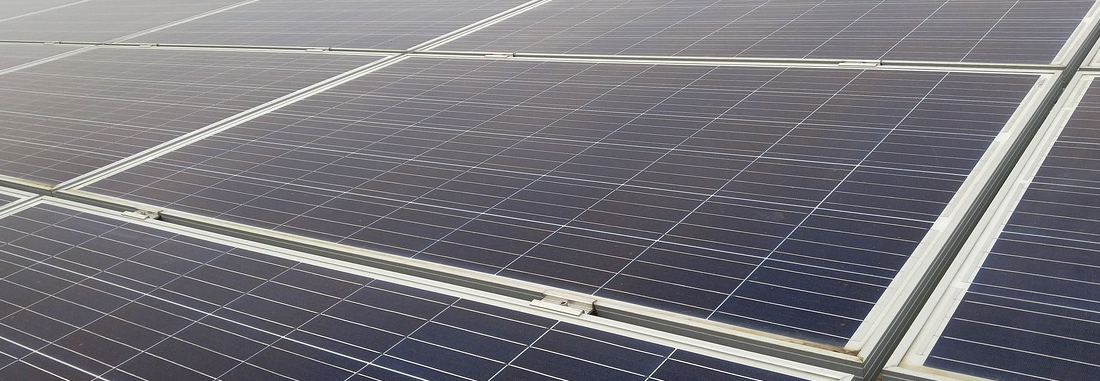
Solution-processed thin film solar cells
Ink-based deposition techniques, such as ink-jet printing, spray-, or slot-die coating, have the potential to bring down costs and allow sustainable growth of renewable technologies due to their low capital expenditure, high material utilization, and high throughput, if high device efficiencies and benign reaction mechanisms can be obtained at the same time. Thin film solar cells based on chalcogenide and perovskite absorbers are particularly promising as they have achieved power conversion efficiencies of over 22%, representing the highest value among thin film solar cells – exceeding market-leading multicrystalline Si – and can be fabricated by liquid deposition methods and on a choice of rigid or flexible substrates.
Selected publications:
- A. R. Uhl, J. K. Katahara, and H. W. Hillhouse, Molecular-ink route to 13.0% efficient low-bandgap CuIn(S,Se)2 and 14.7% efficient Cu(In,Ga)(S,Se)2 solar cells, Energy & Environmental Science, 2016, vol. 9, pp. 130-134. (link)
- H. Xin, S. M. Vorpahl, A. D. Collord, I. L. Braly, A. R. Uhl, B. W. Krueger, D. S. Ginger, and H. W. Hillhouse, Lithium-Doping Affects the Nanoscale Electrical Properties of Grains and Grain Boundaries of Cu2ZnSn(S,Se)4, Physical Chemistry Chemical Physics, 2015, vol. 17, pp. 23859-23866. (link)
- A. Chirila, P. Reinhard, F. Pianezzi, P. Bloesch, A. R. Uhl, C. Fella, L. Kranz, D. Keller, C. Gretener, H. Hagendorfer, D. Jaeger, R. Erni, S. Nishiwaki, S. Buecheler, and A. N. Tiwari, Potassium-induced surface modification of Cu(In,Ga)Se2 thin films for high-efficiency solar cells, Nature Materials, 2013, vol. 12, pp. 1107-1111. (link)
Tandem devices
Both chalcogenide and perovskite absorbers exhibit a wide range of bandgap tunability, which allows for their integration in solution-processed tandem solar cells. By stacking or depositing high bandgap solar cells on top of low bandgap devices the utilization of the solar spectrum can be improved and device efficiencies can be increased by over 40%. The realization of high efficiency, solution-processed tandem devices will dramatically reduce solar electricity prices to approach those of coal or gas.
Selected publications:
- A. R. Uhl, A. Rajagopal, J. A. Clark, A. Murray, T. Feurer, S. Buecheler, A. K.-Y. Jen, H. W. Hillhouse, Solution-processed Low-Bandgap CuIn(S,Se)2 Absorbers for High Efficiency Single Junction and Monolithic Chalcopyrite-Perovskite Tandem Solar Cells, Advanced Energy Materials, 2018, 1801254. (link)
- I. Braly, R. Stoddard, A. Rajagopal, A. R. Uhl, J. Katahara, A. K.-Y. Jen, and H. W. Hillhouse, Current Induced Phase Segregation in Mixed Halide Hybrid Perovskites and its Impact on Two-Terminal Tandem Solar Cell Design, ACS Energy Letters, 2017, vol. 2, pp. 1841-1847. (link)
- A. R. Uhl, Z. Yang, A.K.Y. Jen, and H. W. Hillhouse, All solution-processed chalcopyrite – perovskite tandem solar cells in bandgap-matched two-and four-terminal architectures, Journal of Materials Chemistry A, 2017, vol. 5, pp. 3214-3220. (link)
Photoelectrochemical devices for solar fuels
High voltages from tandem devices allow their use in catalysis reactions for solar fuels. Alongside solar water splitting for green hydrogen, the photoelectrochemical (PEC) reduction of CO2 has received growing attention as a potential solution to the intermittency of solar PV while reducing the amount of excess CO2 in the atmosphere. Solar energy harvested by PV is thereby used to convert CO2 into value-added hydrocarbon chemicals for usable, transportable, and storable fuels. Similar to solar PV, low-cost deposition methods and materials for catalysts and PEC devices are needed to guarantee the growth of the technology as well as cost-competitive solar fuels.
Selected publications:
- S. Yun, Y. Qin, A. R. Uhl, V. Nikolaos, M. Yin, D. Li, X. Han, and A. Hagfeldt, Integrated Devices Based on Dye-Sensitized and Perovskite Solar Cells, Energy & Environmental Science, 2018, vol. 11, pp. 476-526. (link)
- M. Schreier, F. Héroguel, L. Steier, S. Ahmad, J. S. Luterbacher, M. T. Mayer, J. Luo, and M. Grätzel, Solar conversion of CO2 to CO using Earth-abundant electrocatalysts prepared by atomic layer modification of CuO, Nature Energy, 2017, vol. 2, 17087. (link)
